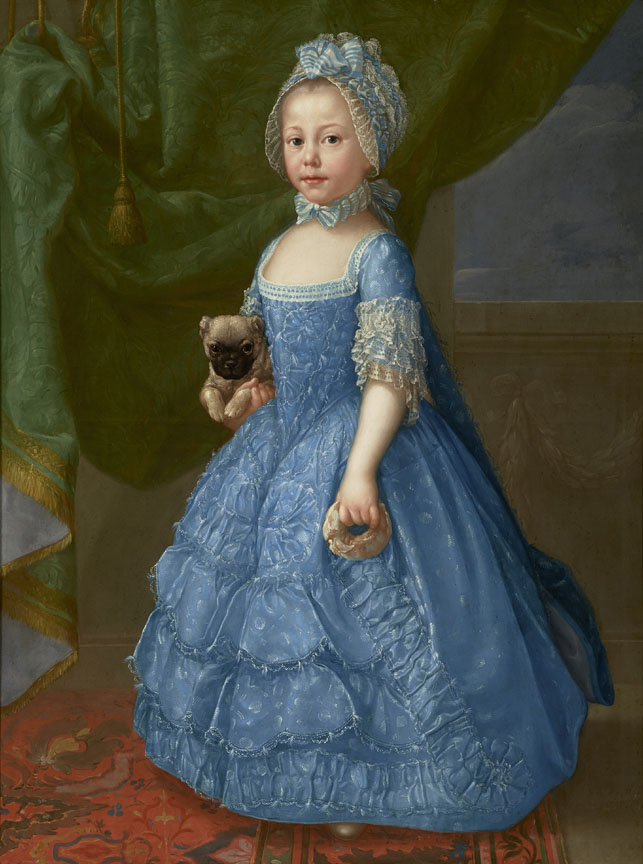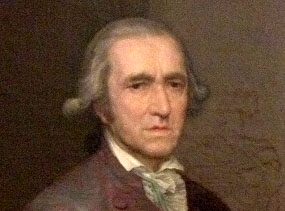Meadows Museum acquires 18th century child portrait
The Meadows Museum acquires portrait of a child by Francisco Bayeu, a widely admired 18th century painter.

Dallas, TX—September 23, 2016—The Meadows Museum at SMU announces the acquisition of the painting María Teresa del Castillo (1767-70), a portrait of a child by Francisco Bayeu y Subías (1734-1795), one of the most important and widely admired Spanish painters of the period.

The acquisition is supported by a gift from Barbara McKenzie, a long-time Meadows Museum docent and a member of the Meadows Museum Advisory Council, and her husband Mike.
“Stunningly beautiful in its painterly details, and delightful in depicting the subject with a pastry and a pet, this is an exceptional portrait by this court painter,” said Mark Roglán, the Linda P. and William A. Custard Director of the Meadows Museum. “The painting is also an important addition to our collection of 18th-century works, greatly complementing our Goya holdings, as well as other artists of the Ancien Régime. We are grateful to Barbara and Mike McKenzie for their generosity; their support ensures that we remain one of the greatest collections of Spanish art in the world.”
Francisco Bayeu was one of the most gifted portrait artists of the period, known in particular for his accurate depictions of his subjects. However, because María Teresa del Castillo was not on public view for the more than eight decades between two exhibition loans in the 1920s and its subsequent offering for sale, only recently could additional research be conducted on its attribution. In 2014, Dr. Arturo Ansón Navarro, a professor of art history at the University of Zaragoza, who has published widely on the art of Goya, Francisco Bayeu, and other 18th- century Spanish painters, completed a study of the painting and reattributed the painting to Bayeu. Subsequent review of the research by Dr. Javier Jordán de Urríes, curator of the Royal Palace in Aranjuez and a specialist in the scholarship of Anton Raphael Mengs and his artistic circle, confirmed this reattribution. Infrareds and X-rays conducted by conservators also provide a better understanding of the artist’s methods.
The title of painting has also undergone a change in light of its reattribution. When on view in the 1925 exhibition at the Sociedad Española de Amigos del Arte in Madrid, and in 1929 at the Museo Nacional del Prado, the portrait was known simply as The Girl with the Rosquilla. As part of his study of the painting, Dr. Ansón Navarro discovered an inscription on the canvas’ stretcher, which also dates to the second half of the 18th century. The inscription reads “Exma. Sra Da Ma Teresa del Castillo,” or “Excelentísima Señora Doña María Teresa del Castillo.” Her name has now become the title of the work.
“The details in this painting are exquisite, reflecting Bayeu’s tremendous skill,” said Nicole Atzbach, curator at the Meadows Museum. “For example, María Teresa del Castillo wears a robe à la française, characterized by a funnel-shaped or conical bodice that then becomes voluminous rectangular skirts conceived in a deep blue silk. The back of the sitter’s dress features the floor- length pleats of the sack gown, the late 17th-century dress from which the robe à la française is derived. María Teresa’s dress also features a square-cut neckline which, when worn by adult women, would provide ample space to display strands of pearls or a velvet bow. In this case, Bayeu has jettisoned such adult adornments and instead outfitted his young subject with more age-appropriate trappings, including a glazed rosquilla (a donut-shaped pastry) in her left hand and a small dog tucked securely under her right arm. The combination of the sophisticated fashion and the child-friendly touches make this painting both beautiful and charming.”
Additional research, including infrared reflectography of the painting recently conducted at the Kimbell Art Museum, shows how the painting itself evolved, from its initial sketched outline to the final product. The infrared reflectography reveals that Bayeu had initially designed the sitter’s skirt to be much wider. The outline of the skirt was subsequently narrowed, to better suit his child subject.
About Francisco Bayeu

About the Meadows Museum

Today, the Meadows is home to one of the largest and most comprehensive collections of Spanish art outside of Spain. The collection spans from the 10th to the 21st centuries and includes medieval objects, Renaissance and Baroque sculptures, and major paintings by Golden Age and modern masters. Since 2010 the Museum has been engaged in a multidimensional partnership with the Museo Nacional del Prado in Madrid, which has included the exchange of scholarship, exhibitions, works of art, and other resources.
# # #
Media Contacts:
| Sascha Freudenheim PAVE Communications sascha@paveconsult.com 917-544-6057 |
Carrie Sanger Meadows Museum csanger@smu.edu 214-768-1584 |